Google shocked the world last week when they mixed up how local results are displayed in search results. Local queries that used to return result pages containing up to seven businesses were replaced with the new three pack format that you can see in the example below:
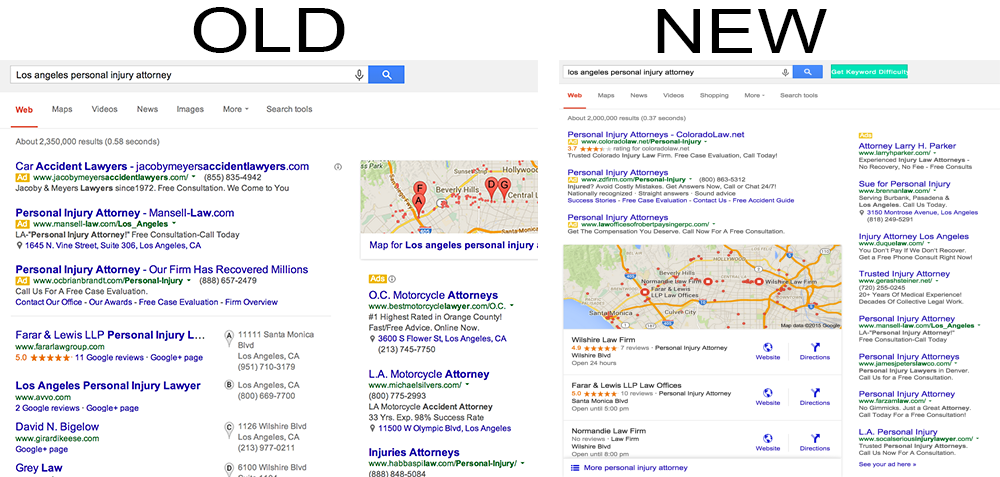
Before this update your business could have easily shown on the first page of Google’s localized results if you ranked within the top 7 results, which gave more visibility to lower-ranking businesses. But now the 7 pack is gone!
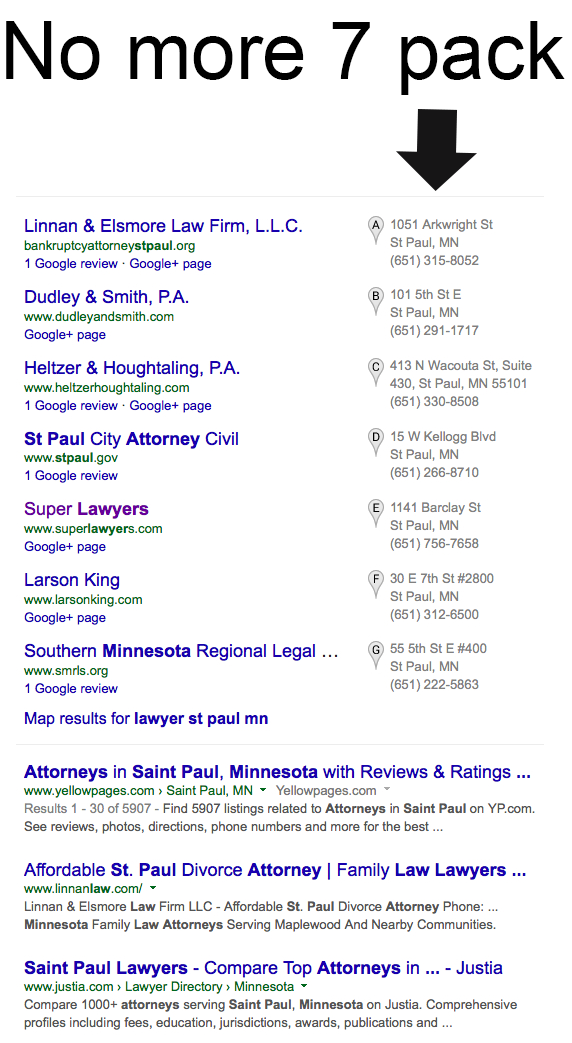
This Was NOT An Algorithmic Change
This was not an algorithmic change, which means that if you previously ranked in the #1 position you will continue to rank in the #1 position. If you noticed a change in your local rankings it was not because of this update. This update seems to have only affected the display and the feature removal, a change which we’ll discuss a bit further down.
Now, You Need To Be In The Top 3
Now that this update has happened, if you want to control the first page you need to be in the top three results.
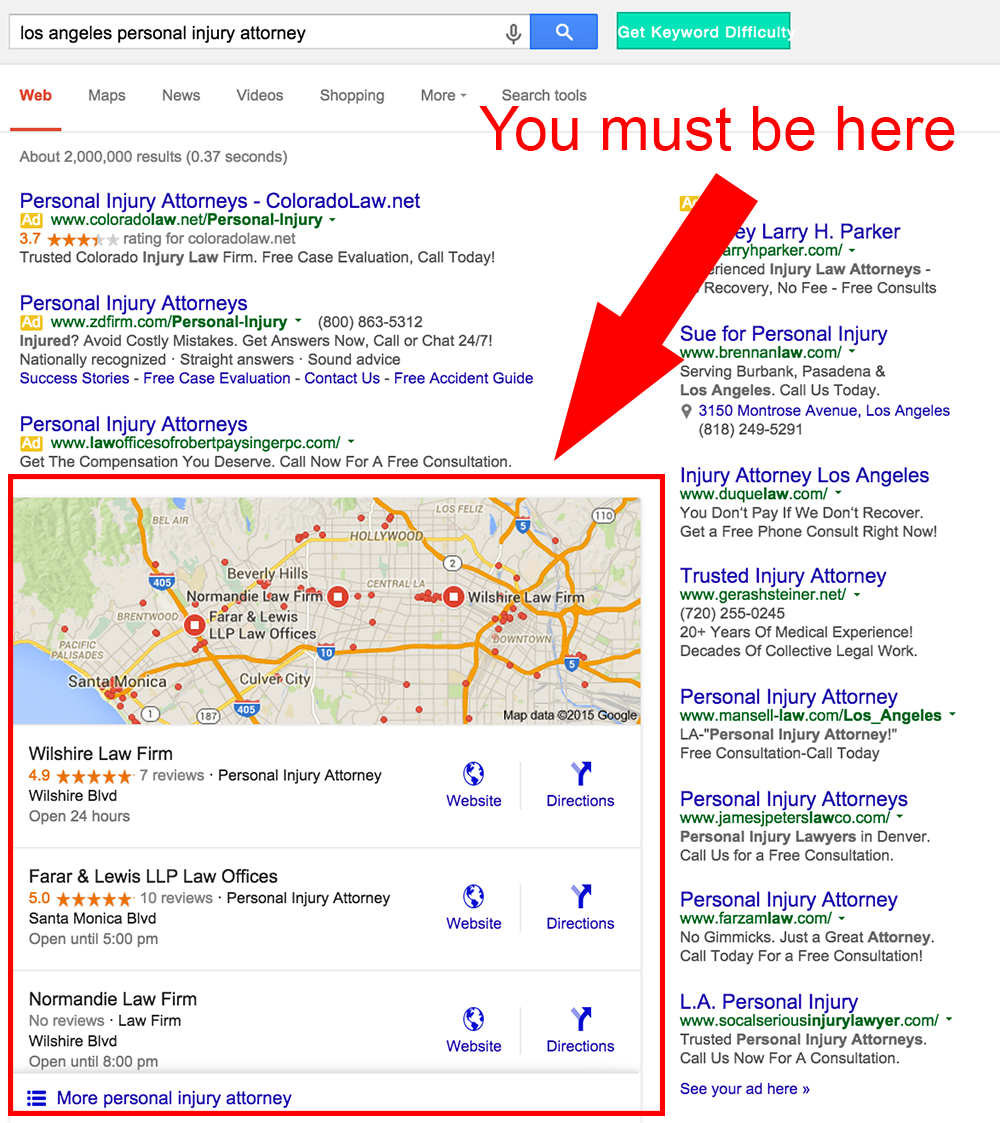
Being listed in the top three should be a clear priority for your organization, but there were other implications that came along with this change as well.
Will This Change Affect User Click Through Rates?
One of the biggest implications of this change is the fact that local results went from 7 to 3 listings. However, there were also some other major changes with this update.
If you were a big fan of Google+ and spent a long time optimizing your Google My Business Profile you will notice that there is no longer a link to your Google+ business page in search results. You will also note the removal of the phone number from the visible listing.
In fact, on desktop searches there are four places for a user to click, which will yield different results. Let’s start by taking a look at a listing and defining the different click areas.

In the above graphic I have defined three areas. This is what I call them and where they lead to:
- The business name and review area: Users who click here will no longer be directed to your Google + page. They will now be taken to a page like the one below with information on your business… and a list of your top ranked competition :(.

- The Website Link: Clicking this link brings you to the firm’s website.
- Directions Link: Directions link now brings you to Google Maps where you can easily get directions.
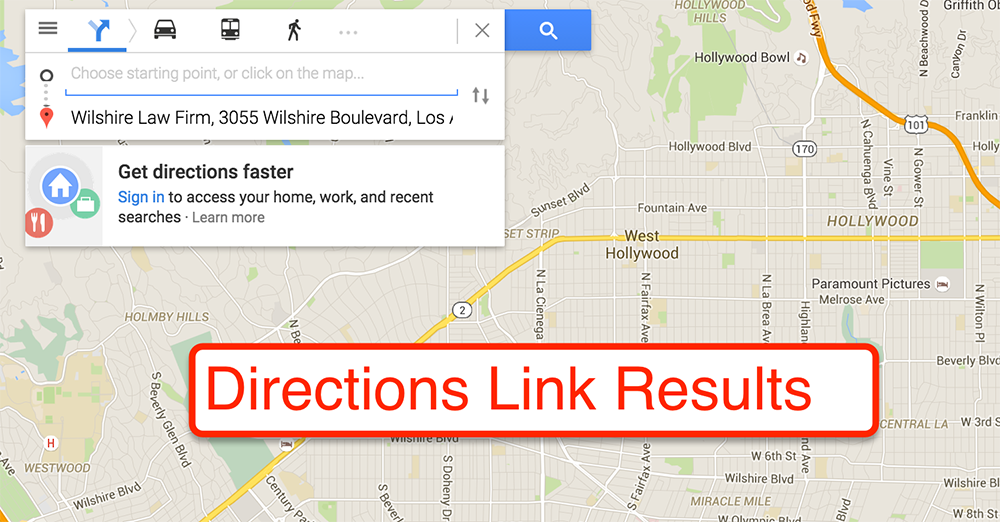
With All Of These Changes, We Need To Test Where User’s Might Click
With all of these changes to local listings and so many more variables we decided to conduct a click test study to find out where potential website visitors are going to be clicking now. Will users even click the local result box? If so, where in the box will they click?
To start getting some data in about how this will affect user behavior we ran a click test study where we recorded 200 different responses from a test audience. This data acts as a gateway to future, more sophisticated studies we will be doing on this.
In this survey we wanted to make the user feel like they were on an actual Google search results page when conducting the test. We took a screenshot of a search result for “Bay Area Employment Lawyer”. We kept in the paid results, one organic result on top as well as the new local pack.
The Hypothesis
My hypothesis was that, due to the new placement and re-organization of these results, less users would click on your listing and be directed to your website with one click.
The Results
The results were much more intriguing than I had originally thought. This was likely due to our inclusion of one organic listing in the result. Here is what we found:
- Local Clicks – 43 total clicks
- Organic Clicks – 79 total clicks
- Pay Per Click Ads – 58 total clicks
- More Local Results – 20 Clicks
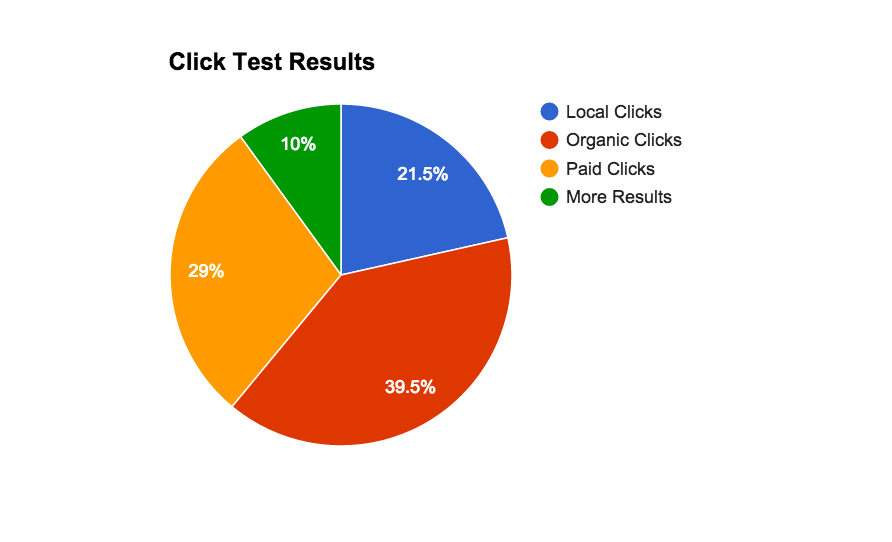
You can see the results in the click test heat map below:
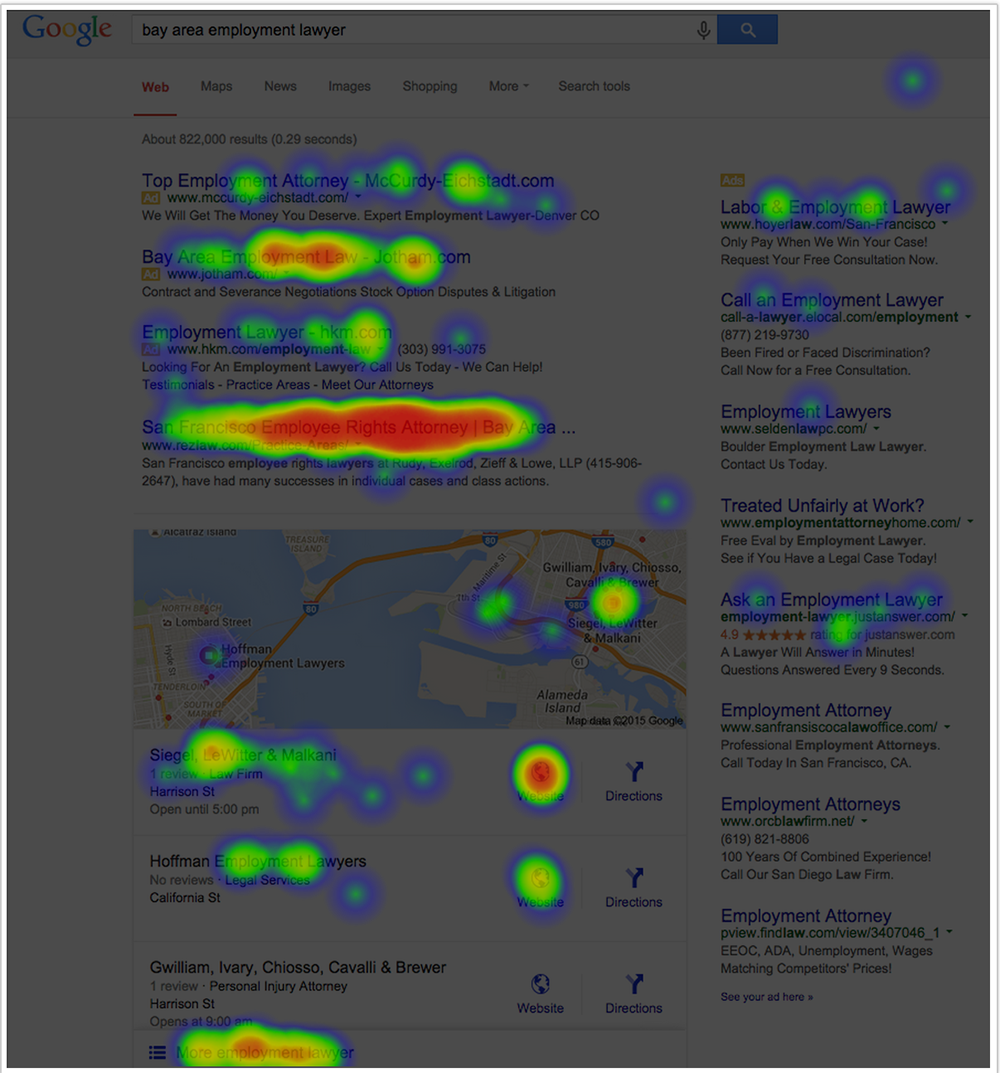
Now lets do a deeper dive into the local clicks. Previously, when users clicked on your business name in the older style of search results, they were directed to your website. This is no longer the case.
Here is a breakdown of the local clicks
8 total clicked on the map: This means that 18% of users were taken to map results where they could see a list of businesses.

20 total clicked on the listings names: This means that 46% of users were taken to the business listing pages.
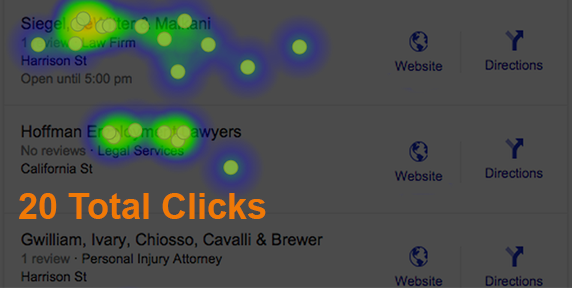
12 total clicked on the the website buttons: As you can see in the image below, only 12 clicks went directly to the firm’s website. This means that only 27% of the local clicks went to the website.
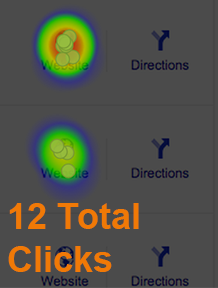
My Analysis
One thing to keep in mind is that even though the 3 pack is out and live across the search ecosystem, the way it displays varies. In many cases there may be paid results first and then the local results.
In other situations like the example we tested, there was one organic listing above the local listings. This is significant because in this test, Organic was the clear leader with the #1 organic result generating 39.5% of total clicks.
While 39.5% of the click-throughs on the organic result went to the firm’s website directly, only 6% of the local clicks resulted in one click visits to the firm’s website.
What You Should Be Focusing On Now
This is just the first of many tests to come. But I would say there are a few takeaways you should focus on.
- Make sure you have a solid review strategy in place
If I’m a visitor and I click your business name and am directed to your result, but now also see 10 other competitors in the left panel, you can bet I’m going to glance at their reviews. If you’re ranked lower in that list but have some significant review authority, I would expect you to steal clicks from other listings. - Don’t Have a One Sided Strategy
Time and time again Google has proven change is the only constant. Only focusing on an organic strategy or only focusing on a local strategy is bad idea. Make sure you’re following best practice and constantly improving both. If you rank #1 organically you’re also very likely to rank #1 locally if properly optimized. - Get To The Top 3
There are only 3 local results now. The higher you are the better you will perform. Do great work and get to the top 3 results.

